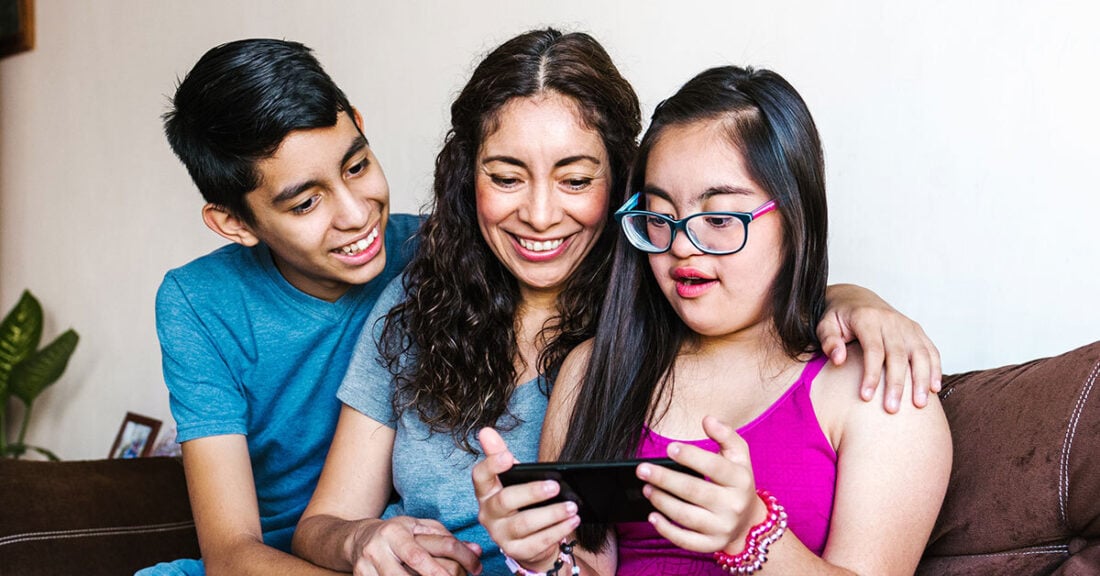Every State Is Failing to Equip All Kids for Success, Especially Children of Color, Says New Report

Despite improvements in many key measures, the United States is still failing its children, especially kids of color, as too many children are blocked from reaching essential milestones of well-being. Wide and persistent disparities are hindering American Indian or Alaska Native, Black and Latino young people in particular, and all children in every state generally. This could have potentially devastating consequences for the country, according to the Annie E. Casey Foundation’s 2024 Race for Results® report.
“We need children of every race and ethnicity to grow up ready to provide the talent, intellect and hard work that will make our country strong and prosperous,” says Leslie Boissiere, vice president of external affairs at the Casey Foundation. “This country of great abundance, creativity and possibility can — and must — make better policy choices to eliminate the barriers kids face.”
The report’s Race for Results index standardizes scores across 12 indicators that represent well-being milestones from cradle to career, converting them into a scale ranging from 0 to 1,000 to make it easy to compare and see differences across states and racial and ethnic groups. The 2024 index also introduces a new group — children of two or more races — who now make up 5% of the U.S. child population. National index scores ranged from 386 for Black children to 771 for Asian and Pacific Islander children. Calculations of the index for all 50 states show that experiences vary widely depending on where a child lives, from a high of 877 for Asian and Pacific Islander children in New Jersey to a low of 180 for American Indian or Alaska Native children in South Dakota.
Young people are missing critical developmental milestones as a direct result of failure to invest in policies, programs and services that support children, especially in under-resourced communities and communities of color. Race for Results also notes with concern that much of the country does not have data broken down by race, ethnicity and other key factors such as whether children reside in immigrant families and whether they have been involved with child welfare, justice and other human-services systems. Without disaggregated data, local and national leaders cannot fully know or understand the needs of young people and their families.
The Casey Foundation introduced the Race for Results index in a 2014 report and updated it in 2017. This third Race for Results report carries data from the aftermath of the COVID-19 pandemic that demonstrate both the urgency of ensuring all children can thrive and the promise of policy prescriptions for achieving that goal. For example, the time-limited expansion of the federal child tax credit in 2021 temporarily lifted millions of families out of poverty. While a majority of those families were families of color, this policy immediately improved financial stability for families of all racial and ethnic groups.
Indicators are grouped into four areas: early childhood, education and early work experiences, family resources and neighborhood context. Asian and Pacific Islander children have the highest index score at 771, followed by white children at 697 and children of two or more races at 612. Scores for Latino (452), American Indian or Alaska Native (418) and Black children (386) are considerably lower. South Dakota had the lowest average index scores across all categories, followed by several southern and southwestern states. Vermont, New Jersey, Massachusetts, New Hampshire and Maine had the highest average of index scores.
A sampling of other key points:
- Reading and math scores tumbled during the pandemic. In 2022, only a third of all fourth graders were proficient in reading. The figure was about 1 in 6 for Black (16%) and American Indian or Alaska Native (18%) and 1 in 5 Latino (20%) children.
- On poverty, between 2007-11 and 2017–21, there were gains among every demographic group, but too many families still struggle to make ends meet. More than half of Black (58%), American Indian or Alaska Native (57%) and Latino (53%) kids live below 200% of the federal poverty level.
- Living in immigrant families can have a mixed effect, with children generally more likely to be born at a normal birth weight, but less likely to be proficient in reading and math.
- There are bright spots. In 2017–21, the share of children living in low-poverty neighborhoods increased for all demographic groups compared with 2007-11, with a jump of 12 percentage points for Latino children.
The Casey Foundation makes several recommendations in Race for Results toward improving outcomes for all children:
- Congress should expand the federal child tax credit and the earned income tax credit.
- Lawmakers should consider baby bonds and children’s savings accounts — programs that contribute public funds to dedicated accounts to help families save for their children’s futures.
- States that have not expanded Medicaid access should do so.
- Policymakers must create targeted programs and policies that can close well-being gaps for young people of color, because universal policies are important but insufficient for continued progress.
“Certain key moments in a young person’s life are pivotal to ensuring they achieve their dreams — and good public policy can affect the outcomes at these moments, as we saw with the expansion of the child tax credit. When we effectively address the needs of young people, they can fulfill their potential, thrive and strengthen our communities in the future,” said Boissiere.
The latest Race for Results is available at www.aecf.org/raceforresults






